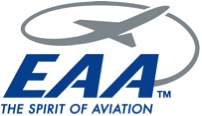THE POWER OF PROCESS AND EXPERIENCE: INTERVIEW WITH EAA'S EARL LAWRENCE
/The Power of Process and Experience: Interview with EAA's Earl Lawrence
Wednesday I had the great pleasure of interviewing Earl Lawrence, VP of Industry & Regulatory Affairs for EAA (Experimental Aircraft Association). I'd contacted Mr. Lawrence as part of an on-going project to create a measure of Systems Savvy. His background in government regulations, volunteer organization, aircraft construction, and piloting suggested the ability to weave together the technology, organizations, and people dimensions I focus on in this blog and in my formal research. We had a wonderful discussion and I took away two key points:
- The design/decision process can play a strong role in the application of systems savvy
- Learning from a broad set of life experiences helps to give you the vision to see all of technology, organization, and people dimensions of a situation
The opening question of the interview was “It would help if you could tell me a story or relate to me an experience you have had in which you learned an important lesson about technology, organizations, and people.” Earl mentioned that the discussion was bringing a smile to his face:
The smile that came to my face is that individuals somehow piece all that together. It wasn't that I knew that I was doing that.... I grew up as a technology person, but recognized the need for relationships and the ability to deal with all different kinds of people and a process to bring those together. LSA [the creation of the light sport aircraft regulations] is a great example. We had a whole series of things -- we had a vision -- but you need to put all three mechanisms together in a way that we can get the technology and the soft[er side] people together.

Background: New aircraft regulation and pilot licensing is not a simple project. Besides the legal aspect, manufacturers have to design new models to meet the regulations, new training/testing must be prepared, and a new market created. From the EAA site:
In 2004, the FAA [Federal Aviation Administration] created sport pilot/light-sport aircraft (SP/LSA) regulations. The most significant change in FAA regulations in 50 years, it allows easier and lower-cost access for those wishing to participate in the joy of flight. For the past half century, EAA has been a leader in providing people with more opportunities to take to the sky, and for the past 10 years has worked with the FAA on the development of SP/LSA.
He noted that he didn't set up the process on his own, but instead approached ASTM International (originally known as the American Society for Testing and Materials). He had observed that ASTM had a world class process for community decision making -- consensus decision making that brings together key stakeholders (e.g., manufacturers, consumers, regulators, consumer membership organizations). Earl gave great credit to the ASTM director who facilitated the process -- this person seems to have a healthy serving of Systems Savvy (I'll be trying to catch up with him for a future post).
Earl offered that the decision making process they used made sure that technology, organization, and people realities were each in play. The manufacturers had clear perspectives on what was technically possible, the regulators brought the realities of safety standards, the consumers (pilots and operators) understood the performance characteristics and price points that would make sense, and Earl and the ASTM facilitator could help the group grow and and weave together the perspectives and needs. Thus, the interweaving requires the right perspectives to be on the table and a process to bring them together.
But how do people obtain this weaving skill? I asked Earl where he got his savvy. Another great story. Earl's mom had a catering business that supported several wedding parties every weekend. Earl worked these weekends starting at age 8 and continuing through college. Interestingly, he didn't appreciate this background to his engineering skills until much later when he was an aerospace manufacturing engineer. Then the lightbulb went off. At that point,
"I'm not fully the tech guy... not the guy running the machine... I'd go nuts designing a bracket all day long. My job was to produce the product, keep everybody happy, and I had to work with a whole bunch of people. Brought cookies." Looked out for them. Kept their interests in mind.
It was then that he realized the perspective he gained from all those weekends with the crying brides [my description, not his]. Many of us have the capability to be savvy along one or two dimensions. We can take the next step and manage technology, organization, and people dimensions -- all three at the same time -- if we can find a process for keeping all three on the table and if we look to our broader experiences to help us see how the pieces might fit together. Comments appreciated on your own "broadening" experiences.







